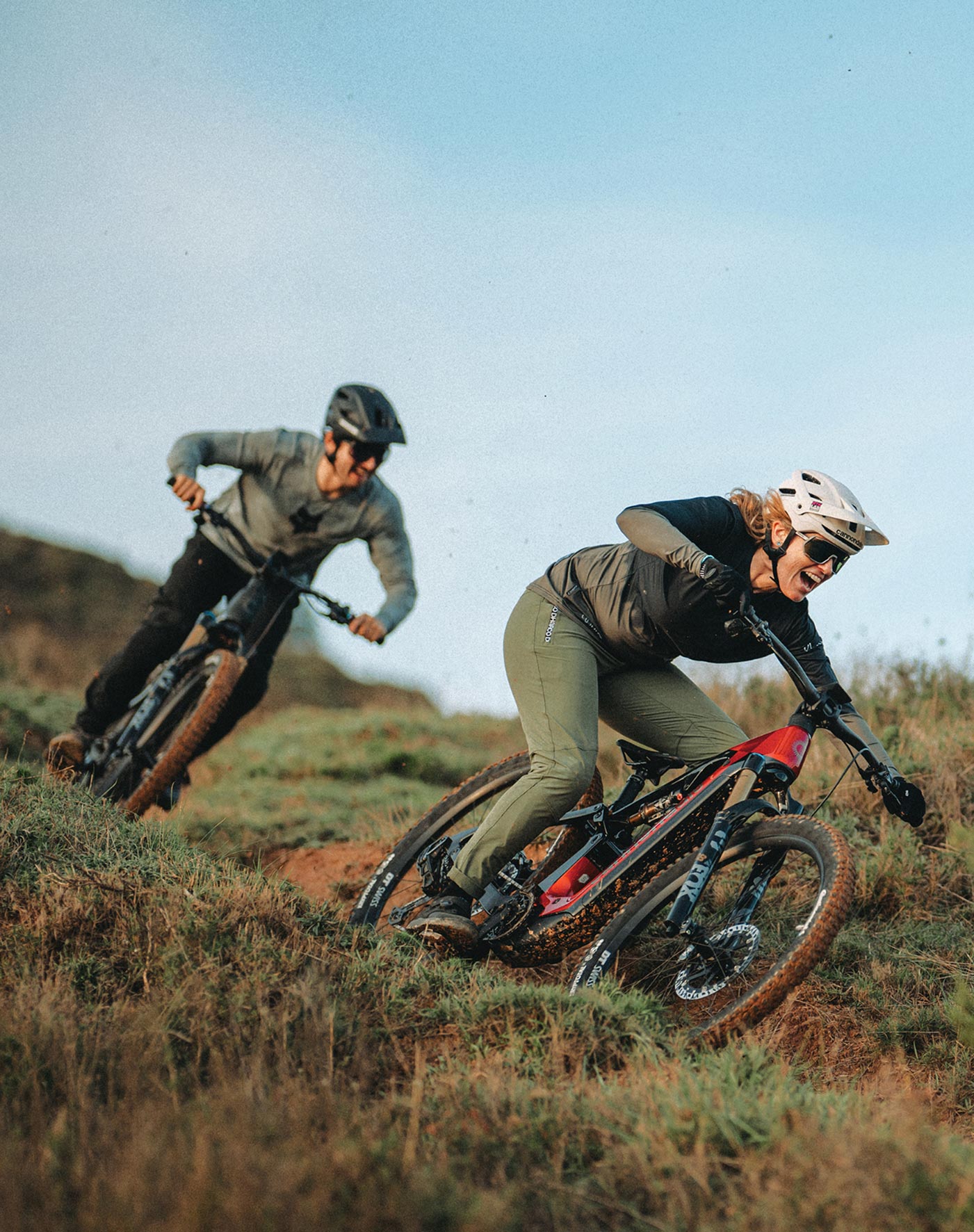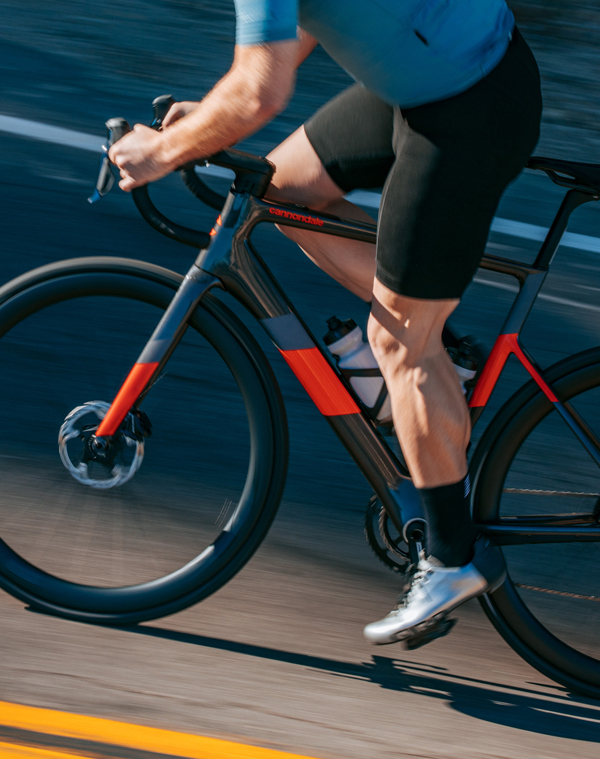Electric Bike FAQ
How do I ride an electric bike?
It’s so easy! You jump on, push a button positioned by the handlebar (or on the frame) to switch the bike on, and you pedal away. The electric motor simply boosts your pedal-power to the rear wheel. If you feel like you want more support or more power, you push another button to select the right power level for you on your e-bike. Going up a steep hill and want to go faster? Then simply select a higher power level. It’s all very simple and intuitive.
How does an electric bike work? And, where is the motor and battery?
An electric-bike, also called an e-bike, rides just like a regular bicycle but is made with a hub motor or mid-motor, a special Lithium-Ion battery, and a connected display to help you out with info such as speed, range, and power level. And the battery? The battery is usually integrated into the frame (on the downtube) that you can’t even see it.
How far can I go on an electric bike?
Many factors influence this answer. With a full charge of your e-bike’s battery your e-bike's range – which is how far you can ride today – varies from 35km / 20 miles right up to 160km / 100 miles or more. In general, the more power you want from the motor, the more energy it uses up, and this affects how far you can go on your bike ride.
Other factors that affect e-bike range are the steepness of the terrain, the road surface, the weight of the rider and kit on board, the wind conditions, and more. Think of it as miles-per-gallon in a car and being able to make the most of your range by riding economically. The tip is to optimize the power level and how you are riding while keeping an eye on the range left in your battery, which is typically shown on your bicycle’s display unit.
How long does it take to charge an electric bike battery?
It depends on the size of the battery, its capacity, and the type of charger. Each e-bike will come with a guide or technical manual which will give you the specifics for your bike’s system. For example, a higher capacity 625Wh battery can be 50% charged in around two hours, and fully charged in five hours with a standard charger. With the fast charger, you can bring the time to charge a battery to 50% right down to just over an hour, and fully charged in around three hours.
How long do electric bike batteries last?
These are built to last. Usually, an e-bike's battery lasts over 500 cycles – this means you can charge and completely discharge it about 500 times. Your electric-bike battery is similar to your phone’s battery. It’s still a lithium battery, it’s only bigger. Also, Li-Ion batteries do not have what’s called a ‘memory’ effect, so there’s no need to fully charge the battery or drain it completely before recharging it again for your next ride.
Where can I see the range of my electric bike?
The range – the distance that you can ride your e-bike – is shown clearly on the digital display positioned on your handlebar, or even on your smartphone.
How do I charge my electric bike?
It’s very simple. You just need to charge your electric bike battery with the charging unit that comes with the bike and plug it into a normal domestic socket or outlet. You can charge the battery directly while it's still on your e-bike, or you can remove the battery and charge it separately in your home or office.
Does pedaling charge the battery?
No – to recharge your battery, it needs to be connected and charged via a regular electric outlet or socket, in the same manner as you would charge your phone or laptop.
Do I still have to pedal an electric bike?
Yes – the motor adds power to your ride, but only when you actually pedal your bike. You can still ride your e-bike even if you do not want to activate the electric assistance, and you can freewheel and cruise along, just like a regular bike. It feels and rides like a conventional bike – with added power, when you want it.
Can I use my electric bike charger to charge other devices?
No – each Cannondale electric bike is delivered with a dedicated charger with a specific cable and plug built for e-bikes only, and this can’t be used for other electrical devices.
Can I get any exercise on an electric bike?
Yes, you can – riding an e-bike is still great exercise. Depending on the amount of exercise you want to do and the power assist you want from the motor – you select between different power modes by simply pushing a button to get the right level of power assist. Remember, you always have to pedal, and it can still be a great workout.
Can electric bikes go up steep hills?
Absolutely! Riding an e-bike means you can go farther, power up those hills, and reach destinations you'd never thought was possible to go to.
Can I lock the battery?
The battery – which is a valuable part of the bike – on each Cannondale e-bike is locked to the frame for security. To remove the battery, you have to use the key provided with your electric bike.
Can I ride my electric bike in the rain?
Yes – all electrical components on an e-bike have been designed and made to be waterproof. You can carefully wash your e-bike with no problem (however we don’t recommend using a jet-wash or power-wash hose), meaning you can enjoy riding in all seasons.
What do I have to do in winter?
In winter it’s recommended to remove the battery from your e-bike and store it in a cool, dry place – Li-Ion batteries don't like being left out in the cold and wet. If possible, when not in use store your e-bike indoors or under-cover as well. You should also try and keep it charged at around 70% to guarantee a long life to your battery.
If I use my electric bike for commuting, how much CO2 emissions will I save?
On many Cannondale electric bikes, there is a wheel sensor that automatically records your trip. You simply download the Cannondale App, pair it to your bike and you can see how you and the Cannondale community are improving your ecological footprint, every time you leave the car behind and take the bike.
Specifically, when riding an e-bike you emit the equivalent of, at most, 3–5 grams of CO2 per Km in full power mode (due to charging via an electric output and how that electricity was supplied). If you did the same journey by driving a car, CO2 emissions are anything above 120grams/km. Save the planet little by little and get fit at the same time!
What should I look for when buying an electric bike? And, how do I decide what’s the best electric bike for me?
First and foremost, picking the right bicycle brand means product reliability, best quality, and safety. Then you have to consider how and where you want to use your electric bike — the type of terrain, how long you want to ride, and where do you want to go. We would also recommend you visit your favorite bike shop to check out the options and speak to someone who can help size you up and pick the right bike for you. We have a wide range of electric bikes to fit your purposes – we have e-bikes for everybody.
Which kind of electric bike motors are there?
There are two different motors, and they relate to their position on the bicycle: an e-bike will be equipped with either a hub motor, or a mid-motor.
The hub motor is in the center of the rear wheel and is widely recommended for urban use, casual cycling, and commuter rides. The hub motor is also good for road cycling, as it’s perfect if you still like to have a sensation of performance.
An e-bike mid-motor is mounted on the frame in the crank/pedals area – this system is generally more powerful and perfect for more mountainous or off-road terrain and longer routes.
Where can I ride my electric bike?
With an electric bike you can ride wherever any normal bicycles are usually allowed: forests, mountains, cycle paths, roads, highways and byways. Speed Pedelec and Class 3 electric bikes are considered motorcycles, therefore they may have to abide by various bylaws for use on the road. Different restrictions may exist in your country, depending on the road laws or regulations, so we’d advise you to check them out. If you ride off-road, it is worth quickly checking with your local Parks Authority or Mountain Rangers if you can freely ride an e-bike in open parkland or mountains.
Do I need a license to ride an electric bike?
On the whole, no you don't. However, each country has different rules regarding e-bikes. For example, there is a distinction between Pedelec and Speed Pedelec for Europe, corresponding to Class 1 and Class 3 for the USA. Pedelec and Class 1 electric bikes have a built-in speed limiter of 25 km/h or 20mph, at which point the motor automatically cuts out – you can still pedal the bike of course, under your own steam, or freewheel as fast as you like. When you drop back below this maximum speed, the motor will kick back in when you pedal again. The same goes for the Speed Pedelec and Class 3 electric bikes which have a speed limit of 45 km/h (28mph). In certain countries, this is considered a motorcycle and could require a license, and a mandatory helmet etc. We recommend that you check the rules of the road regarding e-bikes in your own country.
What is an S-Pedelec?
In Europe you may find an S-Pedelec designation on some e-bikes. According to European regulation, standard e-bikes should go no faster than 25 km/h while an S-Pedelec (or Speed Pedelec) e-bike falls under the same classification as a moped and can travel at speeds up to 45 km/h. Due to its moped designation, S-Pedelec bikes require a driving license, license plate, and riders are required to wear an approved helmet when in use. Regulations may differ from country to country, so be sure to check the requirements where you live.
What does the Wh in the battery specification stand for? Is a bigger number in front of it better?
Wh stands for Watt-hours and determines how much energy is kept in the battery in a single full charge. The larger the Wh number, the more energy can be stored in the battery. So the higher the Wh number, the more potential range you have, and the longer you can ride your e-bike.
What do the Nm and W stand for in the motor description?
In the motor's technical spec, we show you the Newton-meter (Nm) and the Watt (W). Both numbers indicate how much help or power you will have to go fast or climb a steep hill. The Watt level is limited by regulations to 250W continuous output. The Newton Meter is only limited by physics and the value indicates the torque. Torque is the force provided to turn the rear wheel. The higher the torque is, the quicker a bike can be accelerated or ride up a steep hill – think of it as a ‘twisting’ or turning force.
Where can I buy a Cannondale electric bike?
We have a global network of bike shops and official retailers who can help you with your new e-bike purchase – they can help you select the right bike, with the right size, at the right price. Find your closest Cannondale bike shop here!




